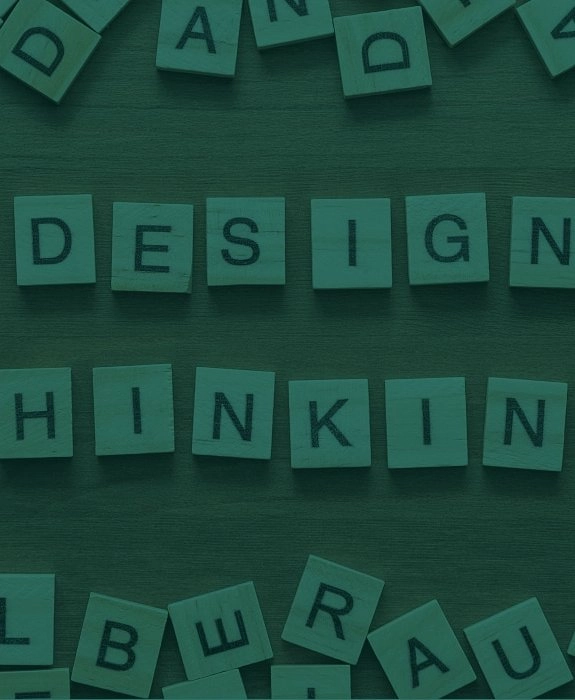Table of Contents
Design thinking is a holistic product design approach where thinking like the user is the focus and user satisfaction is the goal. It is a methodology that was made famous by David Kelley, the founder of IDEO at Stanford University’s School of Design. One of Kelley’s initial clients was Apple, which in 1980 tasked IDEO to develop a mouse for their radical new computer—the Lisa. IDEO developed a product so inventive that its basic mechanism and design impacts even today’s mechanical mouse.
Design thinking requires a hands-on, user-centered approach to solve problems through its five-step process:
1. Empathize
2. Define
3. Ideate
4. Iterate
5. Test
To create better software with design thinking, it is wise to integrate your test team early into the product design process. These are the people who will spend countless hours troubleshooting your software; if there is anyone who can feel a user’s pain, it is the tester. Now, let us look closely at the five steps.
1. Empathizing with the user
In the empathy stage, it is important to ask the right questions to help your team to solve the right problems. Getting into the shoes of the user is the best way to create a quality software product. Hence, leveraging your testing team’s knowledge and expertise to develop use cases and identifying limitations of the product is a good way to go. From defining the user journey to defining user personas, it’s important to understand who your users are and how they will fit into your product’s ecosystem.
2. Define user needs
Research done in the empathize stage can be used to define user needs. Your testers can be very useful at this stage. They can point out where problems will arise and can provide key insights during product development. Having clearly identified user needs can help you design a robust software with many features that will excite and delight your users.
3. Ideate
Never limit the range of possible solutions you can design. The very purpose of the ideation stage is to explore alternative solutions. During this stage, invite stakeholders to share and discuss their innovative ideas and to collaborate in finding viable solutions.
4. Iterate
Design thinking is all about using the best ideas and solutions in the ideation stage and then implementing them in the software in an iterative manner. Gone are the days when the idea of iterations carried a negative connotation. Today, it is thought of as being essential to the creation of a better product. This shift in mindset elevates your testers to a level significantly higher than that of debuggers, as they are now at the very center of the software development process.
5. Test
Deploy your software to knowledgeable user groups to see how they receive your product. Make notes on how users are interacting with the prototype and the kind of problems they are facing in the interaction. Allow your users the complete freedom to test your product, because all feedback is valuable.
The design thinking approach helps you discover points of failures via traditional quality assurance, which becomes a part of the creative effort. Iterations aren’t seen as wasted effort but a means of fashioning a finer product. Software testers have thus become an integral part of the development process. Essentially, design thinking aligns the QA efforts with the development efforts.
If you’re looking for knowledgeable custom web application development services for your business and you’re focused on design thinking contact us today at the link below for a FREE CONSULTATION for your next development project!
Stay ahead of the game with our helpful resources

4 digital solutions to address common application performance issues
High network latency, memory leaks, slow page loads, heavy CPU usage, and unresponsive servers are all typical performance issues we’ve experienced at some point when using or accessing digital applications. With how easy they occur in projects across verticals, you might be wondering whether the development teams behind these programs have done enough due diligence prior to the release. But human errors and oversight aren’t always the culprit. The reality is that while developers can strive to develop a fully functioning program with virtually no apparent faults upon delivery, no software is truly error-free. Even the most rigorously tested applications

6 useful tips for creating more robust application lifecycle management
As digital technology becomes the norm, software acquisition is now key to gaining a competitive edge in today’s market. Be it as a value offering tailored to consumers or a productivity tool to run complex processes, custom software undeniably helps companies drive growth and deliver value more efficiently. Just as necessary as having a proprietary application is prescribing a standard procedure to govern and maintain its utility. This is to ensure that your business can develop or adopt the right type of software—one that can fully cater to your business needs while keeping disruption to a minimum across critical milestones.

5 major roadblocks businesses must overcome when transitioning into a new software environment
As the business landscape becomes increasingly saturated, staying ahead of the curve often means embracing disruptive technologies to meet the fickle market demands. In most cases, this entails knowing when to pivot your current strategy to an entirely new solution. But recognizing the importance of digital shift is one thing; implementing the necessary IT upgrade is another. A global survey by Deloitte has found that although 87% of companies manage to identify the impact of digital trends on their industries, only 44% have adequately prepared for the coming disruptions. This vast disconnect between organizational expectations and conditions in the field

Is cloud computing the answer to better software development?
Cloud computing is perhaps not a term often heard in daily conversations, but it is one with a far-reaching impact on our technological needs. From expansive options of online data storage to numerous suites of web-based productivity tools like Google Workspace, nearly everyone has used a cloud-enabled technology. Over the last decade, this high degree of versatility also underpins the rapid cloud uptake among businesses. In fact, one survey has found that 94% of companies have already shifted their computing workloads on cloud platforms to varying extents. Unsurprisingly, the market size for cloud technology continues to grow exponentially. With a



